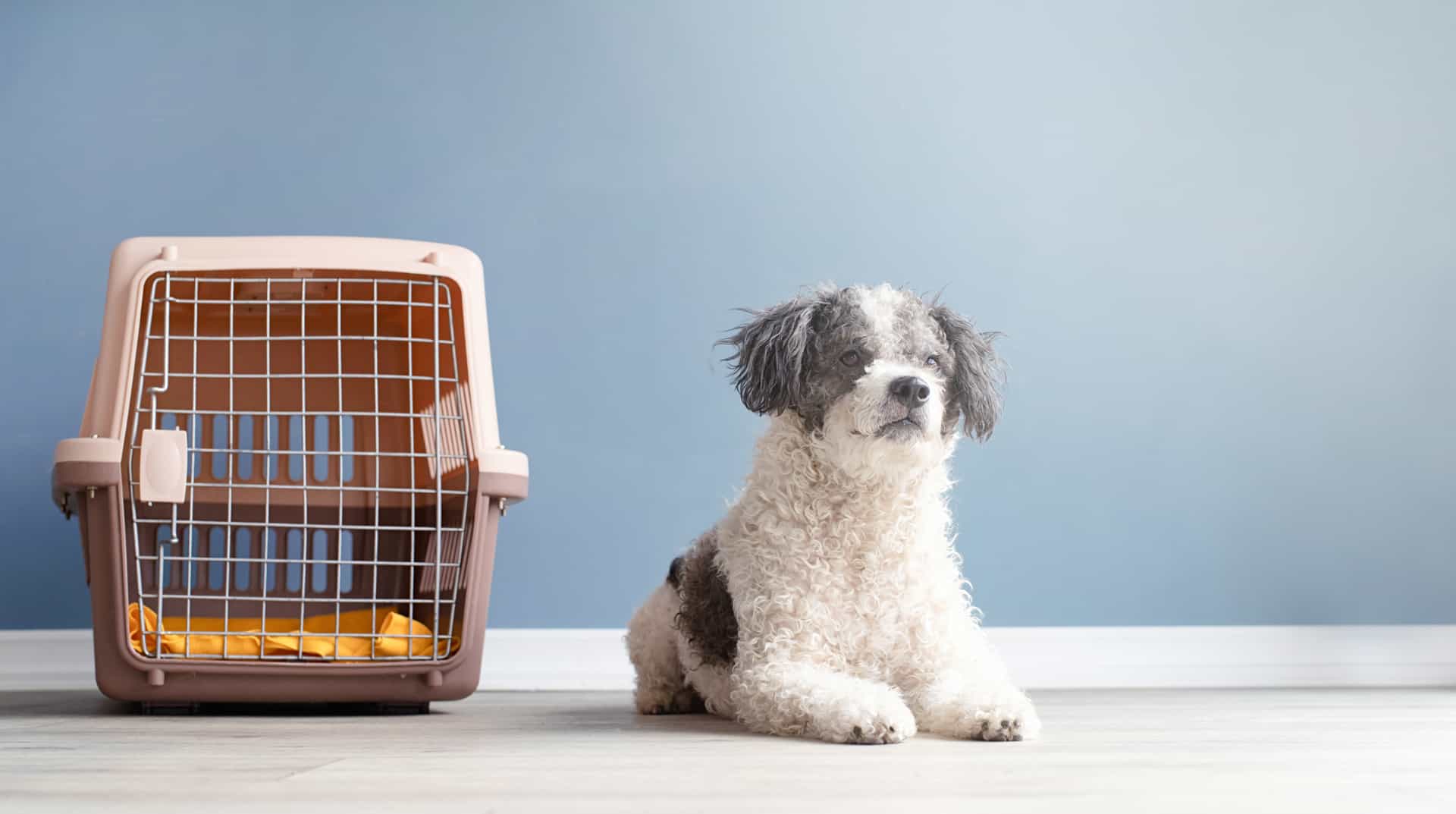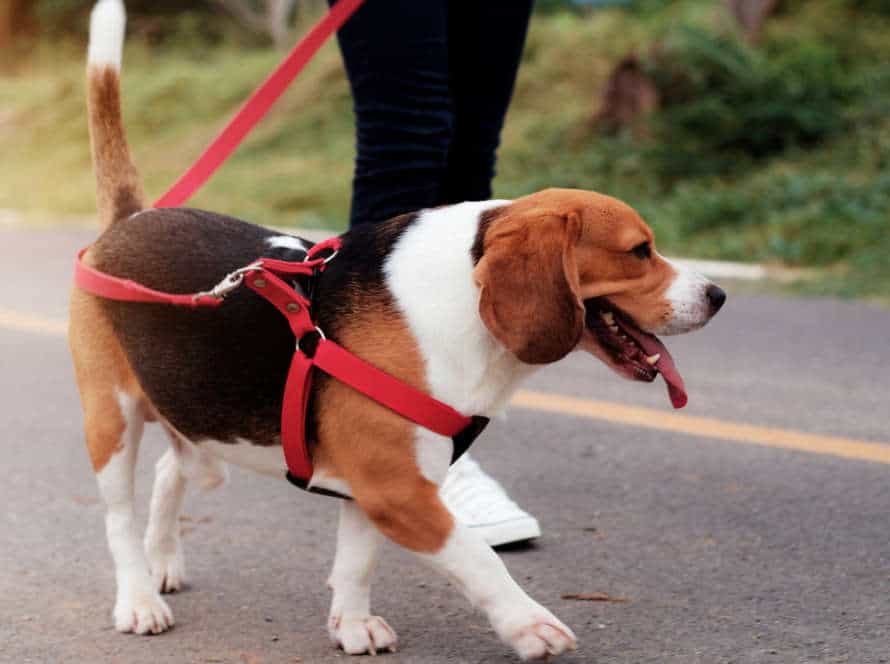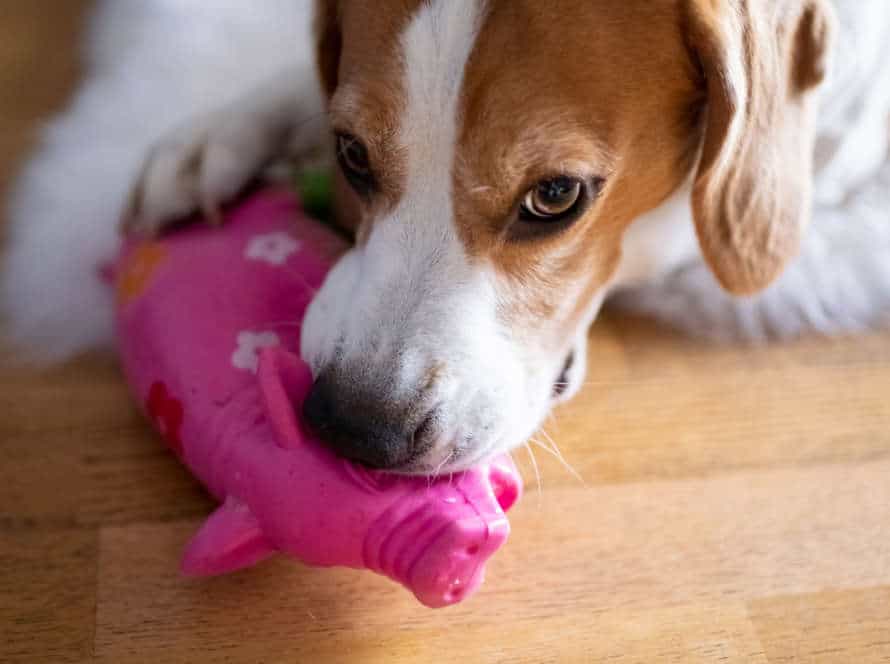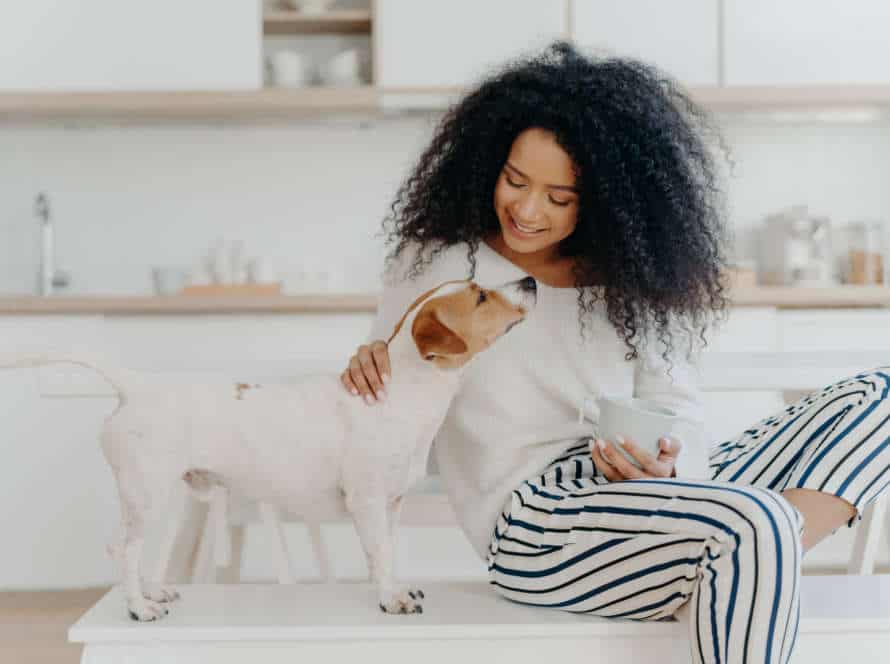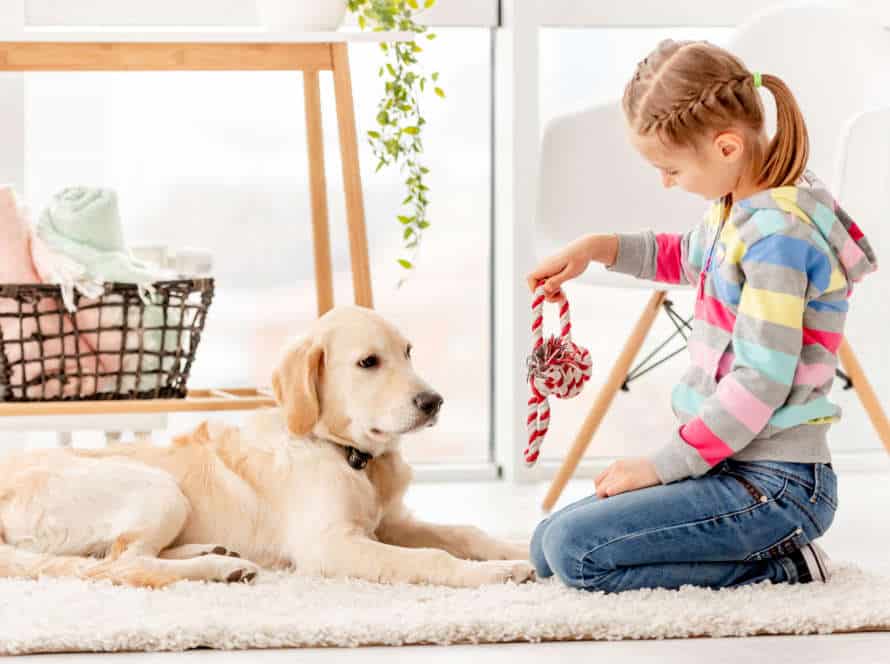Nighttime Crate Training Tips for a Restful Night’s Sleep
Nighttime crate training can be hard for both dogs and pet owners. To make sure you all get a good night’s sleep, here are some tips:
- Get the proper size crate for your pup. It should be big enough for them to stand, turn and lay down easily.
- Make the crate comfy with a soft bed, blanket or towel. Try putting an item of your clothing in too to make them feel better.
- Set up a routine with the crate. Feed them in there and use treats and rewards to encourage them to go in.
- Make sure they go toilet before bedtime so that they don’t need to wake up in the night.
- Put the crate in a peaceful, dark room to keep them relaxed.
- Play some calm music or use a white noise machine to help them settle.
These tips will ensure a peaceful night’s sleep for all involved!
Preparing for Crate Training
Crate training? Yep, it’s an effective way to make your pup feel secure and safe when sleeping. Want to get your pup prepped for a successful crate training experience? Here are some tips and advice to help them get the most out of their sleep routine!
Choosing the Right Crate Size
Choosing the right crate size for your pet is important for successful crate training. This space should be big enough for them to stand, lie down, and turn around. But if it’s too large, it can slow down training and make them toilet in the crate. Here are the steps to find the right size:
- Measure their length from the tip of their nose to the base of their tail.
- Measure their height from the floor to their tallest point.
- Add two to four inches to both measurements.
By getting the ideal size, you’ll make a comfy space for your pet. This will make nighttime crate training much easier!
Choosing the Right Crate Location
Selecting the ideal spot for their crate is important when setting up nighttime crate training for your pup. Choose somewhere safe, comfy, and easy to access. Here are some pointers:
- Pick a tranquil, low-traffic area in your home away from distractions and noise.
- Make sure the crate is in a well-ventilated area, so your pup stays cool.
- Ensure the crate is big enough for them to stand, turn around, and lie down with ease.
- Put a soft blanket or pad inside the crate for extra comfort.
- If your pup is a pup, use a divider to limit the size of the crate and avoid any accidents.
With these tips, you can find the perfect place for their crate and have a peaceful and restful sleep!
Introducing Your Puppy to the Crate
Introducing your pup to the crate is key when crate training. Here’s how:
- Choose a crate that is big enough for your pup.
- Put soft bedding and toys in the crate to make it more attractive.
- Encourage your pup to explore the crate by putting treats or food inside.
- Close the door for short periods while your pup is in the crate. Gradually increase time and distance away.
- Give positive reinforcement when your pup enters the crate on their own.
- To have a peaceful night’s sleep, give your pup a crate at night. Also, set up a consistent bedtime routine. Don’t give treats/meals right before bedtime. Provide a comfortable and quiet sleeping space.
Steps to Crate Train Your Puppy at Night
Crate-training your pup at night can bring peace to you and them. Do it right and it’s a great way to manage bad behavior, like barking and chewing. Plus, it’ll help your pup learn to go potty in the right place.
Here’s how to crate-train your pup at night:
Start with Short Intervals
Crate training your pup can be tough, specially at night when having a good rest is important. A major key to success is to start with small intervals, and then increase the length as your puppy gets comfortable. Here’s how to do it:
- Introduce your pup to the crate during the day by placing treats and toys inside.
- Put your pup in the crate for 5-10 minutes at a time, at first.
- Gradually increase the time spent in the crate, until it’s an hour or more.
- Make the crate a positive experience by giving comfort items, like a toy or blanket.
- Stay consistent with a routine. Take your pup out for potty breaks before and after crate time, and give meals and playtime at set times.
Be patient and consistent. With positive reinforcement, your pup will learn to think of the crate as safe and secure. Pro Tip- Don’t give food or water two hours before bedtime to minimize nighttime potty breaks.
Create a Bedtime Routine
For successful crate training at night, a consistent bedtime routine is key. To set up a restful night’s sleep:
- Pick a specific bedtime for your puppy and stay with it.
- Do calming activities like a short walk or cuddle time.
- Feed and water your pup, and take them out for a bathroom break before bed.
- Put them in the crate with a soft blanket, and speak to them softly.
- Turn off the lights and stay quiet.
- Don’t answer if they whine or bark, or let them out of the crate. This rewards negative behavior and messes up the routine.
By establishing a consistent routine, your puppy can adjust to the crate, have fewer accidents, and sleep soundly. Pro tip: Don’t give food or water in the hours before bedtime to reduce accidents.
Use Crate Training Commands
Crate training commands are key for a successful night-time crate training of your pup. Here’s what you do:
- Introduce your puppy to the crate during the day. Let them explore.
- Use treats or toys to encourage them to get in.
- Once they’re happy going in and out, use the command “kennel up” or “go to bed” every time they enter.
- At night, use the same command to tell them it’s time for bed.
- Keep the crate in a quiet, peaceful spot, far from distractions.
With patience and consistency, your pup will become comfy in their crate, making night-time training a breeze!
Avoid Middle-of-the-Night Potty Breaks
Crate training puppies can be a challenge, especially when it comes to middle-of-the-night potty breaks. Here’s how you can make sure your pup gets a good night’s sleep:
- Start crate training in the daytime. Increase the time gradually, and make sure your pup enters the crate willingly.
- Feed them 2-3 hours before bed, and take them out for a potty break right before you hit the hay.
- Make their crate comfy with a blanket, toys and treats.
- If you have to take them out, keep it brief and don’t play.
- Create a bedtime routine and put the crate in a quiet, dark place.
Follow these steps and you’ll successfully crate train your puppy at night.
A pro tip: Be patient and give your pup lots of love and attention during the day.
Helping Your Puppy Settle into the Crate
Crate-train your pup and they’ll settle in fast! Patience is key – in weeks, they’ll be comfortable and have peaceful nights. Here’s how:
- Make the crate inviting; add a soft blanket and some treats.
- Give your puppy lots of praise when they enter the crate.
- Leave the crate door open so they can explore.
- Put their favorite toy inside the crate.
- Feed them in the crate – this will help them associate good things with the crate.
- Finally, give them lots of rest and snuggles!
Using Comfort Objects
Using comfort objects such as blankets, toys and treats can help your pup settle down into the crate for a good night’s rest. Here are some tips:
- Blankets: Place a soft and safe blanket in the puppy’s crate for warmth and comfort.
- Toys: Give them a stuffed animal or chew toy to keep them busy and distracted from stress. Choose toys that won’t easily break!
- Treats: Reward them when entering the crate or when being quiet through the night. Use treats that are safe for puppies and not too high in calories.
Remember, every pup is different and may respond differently to comfort objects. Be patient and observe your pup’s behavior to find what works best.
Providing Calming Sounds
Crate training your pup for a peaceful night’s sleep? Providing calming sounds might be the way to go!
Try white noise – like from a fan or a machine. Or calming music – think classical or instrumental. Nature sounds can also work – rain, ocean waves, birds chirping.
Experiment with different sounds and observe your pup’s reaction to see what works for them.
Encouraging Relaxation Techniques
Incorporating relaxation techniques into your pup’s nighttime crate training can result in a more peaceful sleep. Here are some tips:
- Utilize calming aromas – like lavender oil or a pet-specific spray – for extra comfort.
- Play calming music to help them relax and drift off faster.
- Massage therapy can be beneficial; gently massage their neck and back.
- Ensure the crate’s cozy with soft bedding and favorite toys.
- Be patient; crate training takes time. Showing consistency is key to making the crate a secure and safe space.
Troubleshooting Common Crate Training Issues
Crate training can be a great way to train your pup. But, it can be hard for them to adjust to sleeping in the crate. If your dog is having troubles, here are some tips for you! This section will give you practical solutions for common crate training problems.
Whining or Barking in the Crate
Whining or barking in the crate is a common problem when training dogs. However, it can be fixed! Here are some tips to help you:
- Make the crate comfy and enjoyable for your pup. Put his favorite blanket, toys, and treats in there.
- Don’t use the crate as punishment. It will only cause stress and anxiety in your dog.
- Start off with short intervals in the crate. Gradually increase the time as your pup gets comfortable.
- Ignore your pup’s barking or whining. Responding will only encourage this behavior.
- Give your pup a nighttime routine. Like a short walk and cuddle time before bed.
By following these tips, your pup’s crate-training will be a success and he’ll have a peaceful night’s sleep.
Escaping or Damaging the Crate
Escape or destruction of the crate is a common problem pet owners face while crate training. This can be very stressful and annoying.
To solve this, here are some steps to follow:
- Get the right size crate for your pet. It must be big enough for them to lie down and turn around, but not too large that they can sleep in one area and pee in the other.
- Make the crate comfortable with cushions, blankets and toys so your pet is entertained and relaxed.
- Keep your pet occupied with interactive toys and treats. This will keep them busy and less likely to escape or damage the crate.
If your pet still tries to escape or destroy the crate, ask your veterinarian or a professional trainer for more help.
Refusing to Enter the Crate
Refusing to enter the crate is a common problem for pet owners. Here are some tips to make it easier:
- Make the crate comfy. Put bedding, toys, and treats inside to make it inviting.
- Make the crate a positive place. Reward them with treats when they go in, or play with them there.
- Go slow with training. Start with short periods and gradually increase the time.
Crate training at night is important too. Have a bedtime routine, use a calming spray, and don’t feed or play before bed. Crate training takes patience, but with the right techniques, it can make pets safe and comfortable.
Graduating from Crate Training
Crate training is great! It gives your pup a safe place, plus security. It also teaches them when it’s time to sleep. Plus, it protects your home from any messes or destruction at night.
Now that your pup knows their crate, let’s transition them to a new sleeping area. Read on for tips to do this.
Gradually Increase Alone Time
Gradually giving your pup more alone time is key to graduating them from crate training. Here’re some tips for nighttime routine:
- Pick a comfy, right-sized crate.
- Put the pup’s beloved blanket or toy inside.
- Entice them in with treats or toys.
- Close the door for a few seconds at first and then increase the duration as they get used to it.
- Start leaving the room for short spans and gradually increase the time away.
- Reward your pup for good behavior.
- Stay patient and consistent.
- Then, soon enough, your pup will feel comfortable sleeping in the crate all night long!
Retrain After Potty Training Setbacks
Potty training setbacks with dogs are common, so retrain them to keep good habits. Here’s how:
- Identify why it happened – change in routine, diet, medication?
- Set a consistent schedule – outside every few hours, esp. after meals, naps and playtime.
- Use treats and praise when they go potty outside.
- Crate train for nighttime – gradually introduce them to the crate with treats and toys.
- Make sure the crate is right size.
Pro tip: Patience and consistency with training, plus positive reinforcement, will help your dog regain potty training and reach a happy routine.
Removing the Crate from Your Home
Graduating from crate training is important for you and your pup. To make the switch smooth, preparation is needed. Here are tips to help:
- Start with short periods. Leave pup out of crate, increasing length of time as pup gets used to being alone.
- Use positive reinforcement. Reward and praise pup for good behavior, like staying calm and relaxed.
- Provide comfy sleeping space. Make sure pup has a cozy bed or a cushion for crate.
- Monitor closely. Keep an eye on pup during initial days and nights out of crate. Offer safe environment and correct unwanted behaviors.
- Patience and consistency is key. Your pup will soon love the freedom of sleeping outside of crate.
Frequently Asked Questions
1. What is nighttime crate training and why is it important?
Nighttime crate training involves getting your dog accustomed to sleeping in a crate at night, which can help prevent accidents and destructive behavior. It also provides a safe and comfortable space for your dog to rest.
2. How do I choose the right crate for my dog?
The crate should be large enough for your dog to stand up, turn around, and lie down comfortably. It should also be sturdy and well-ventilated. Consider your dog’s size and weight when selecting a crate.
3. How do I introduce my dog to the crate?
Start by placing treats or toys inside the crate to encourage your dog to go inside. Gradually increase the amount of time your dog spends in the crate, and reward them with treats and praise for staying inside. Keep the crate in a quiet, comfortable area of the house.
4. Is it okay to let my dog cry in the crate at night?
It’s normal for your dog to cry or whine when they’re first getting used to the crate. However, it’s important to be patient and not give in to their demands to be let out. Gradually increase the amount of time your dog spends in the crate until they are comfortable sleeping through the night.
5. Should I cover the crate at night?
Covering the crate can create a den-like environment and help your dog feel more secure. However, make sure the cover is not too thick and allows for proper ventilation. You can also leave one side of the crate uncovered to give your dog a view of the room.
6. How long should I use the crate for nighttime sleeping?
The length of time you use the crate for nighttime sleeping will depend on your dog’s individual needs. Some dogs may be ready to sleep outside of the crate after a few months, while others may prefer to sleep in the crate indefinitely. Pay attention to your dog’s behavior and adjust accordingly.

